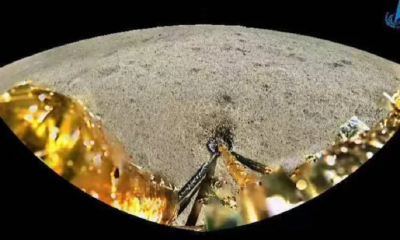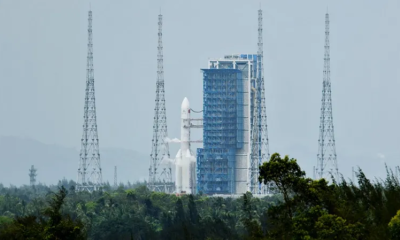Foreign News
China says its spacecraft lands on Moon’s far side
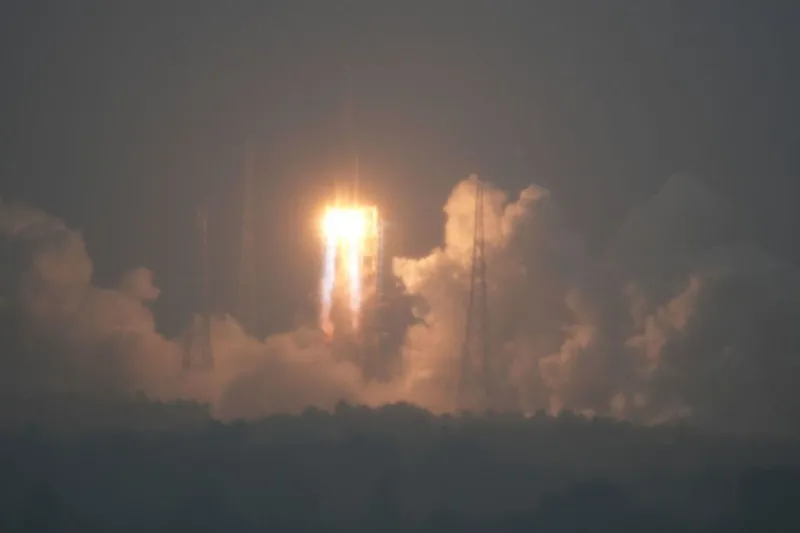
China says its uncrewed craft has successfully landed on the far side of the Moon – an unexplored place almost no-one tries to go.
The Chang’e 6 touched down in the South Pole-Aitken Basin at 06:23 Beijing time on Sunday morning (22:23 GMT Saturday), the China National Space Administration (CNSA) said.
Launched on 3 May, the mission aims to collect precious rock and soil from this region for the first time in history. The probe could extract some of the Moon’s oldest rocks from a huge crater on its South Pole.
The landing was fraught with risks, because it is very difficult to communicate with spacecraft once they reach the far side of the Moon. China is the only country to have achieved the feat before, landing its Chang’e-4 in 2019.
After launching from Wenchang Space Launch Center, the Chang’e 6 spacecraft had been orbiting the Moon waiting to land. The lander component of the mission then separated from the orbiter to touch down on the side of the Moon that faces permanently away from Earth.
During the descent, an autonomous visual obstacle avoidance system was used to automatically detect obstacles, with a visible light camera selecting a comparatively safe landing area based on the brightness and darkness of the lunar surface, the CNSA was quoted as saying by state-run Xinhua news agency.
The lander hovered about 100m (328ft) above the safe landing area, and used a laser 3D scanner before a slow vertical descent. The operation was supported by the Queqiao-2 relay satellite, the CNSA said.
Chinese state media described the successful landing as an “historic moment”. The state broadcaster said “applause erupted at the Beijing Aerospace Flight Control Center” when the Chang’e landing craft touched down on the Moon early on Sunday morning.
The lander should spend up to three days gathering materials from the surface in an operation the CNSA said would involve “many engineering innovations, high risks and great difficulty”. “Everyone is very excited that we might get a look at these rocks no-one has ever seen before,” explains Professor John Pernet-Fisher, who specialises in lunar geology at the University of Manchester.
He has analysed other lunar rock brought back on the American Apollo mission and previous Chinese missions. But he says the chance to analyse rock from a completely different area of the Moon could answer fundamental questions about how planets form.
Most of the rocks collected so far are volcanic, similar to what we might find in Iceland or Hawaii. But the material on the far side would have a different chemistry . “It would help us answer those really big questions, like how are planets formed, why do crusts form, what is the origin of water in the solar system?” the professor says.
The mission aims to collect about 2kg (4.4lb) of material using a drill and mechanical arm, according to the CNSA.
The South Pole–Aitken basin, an impact crater, is one of the largest known in the solar system.
From there, the probe could gather material that came from deep inside the lunar mantle – the inner core of the Moon – Prof Pernet-Fisher says.
The Moon’s South Pole is the next frontier in lunar missions – countries are keen to understand the region because there is a good chance it has ice.
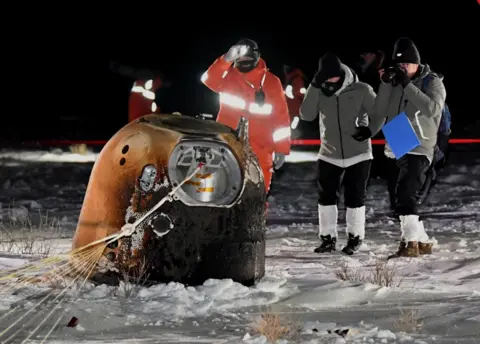
The capsule in the last Chinese moon mission, Chang’e 5, brought back soil and rocks in 2020 (BBC)
Access to water would significantly boost the chances of successfully establishing a human base on the Moon for scientific research.
If the mission succeeds, the craft will return to Earth with the precious samples on board a special return capsule.
The material will be kept in special conditions to try to keep it as pristine as possible.
Scientists in China will be given the first chance to analyse the rocks, and later researchers around the world will be able to apply for the opportunity too.
This is the second time China has launched a mission to collect samples from the Moon.
In 2020 Chang’e 5 brought back 1.7kg of material from an area called Oceanus Procellarum on the Moon’s near side.
China is planning three more uncrewed missions this decade as it looks for water on the Moon and investigates setting up a permanent base there.
Beijing’s broader strategy aims to see a Chinese astronaut walk on the moon by around 2030.
The US also aims to put astronauts back on the moon, with Nasa aiming to launch its Artemis 3 mission in 2026.
(BBC)
Foreign News
Ireland among countries boycotting Eurovision after Israel allowed to compete

Ireland, Spain, the Netherlands and Slovenia will boycott the 2026 Eurovision Song Contest, after Israel was allowed to compete.
They were among a number of countries who had called for Israel to be excluded over the war in Gaza, as well as accusations of unfair voting practices.
Spanish broadcaster RTVE led calls for a secret ballot on the issue at a meeting in Geneva. It said organisers denied that request – a decision that “increased [our] distrust of the festival’s organisation”.
Ireland’s RTÉ said it felt that its “participation remains unconscionable given the appalling loss of lives in Gaza and the humanitarian crisis there which continues to put the lives of so many civilians at risk.”
Spain is one of Eurovision’s “Big Five” countries along with France, Germany, Italy and the UK.
Their artists are allowed straight into the final, as their broadcasters provide the largest financial contribution to the EBU.
Approximately 50 broadcasters, including the BBC, attended a meeting of the European Broadcasting Union (EBU) on Thursday to discuss the future of the contest, which is watched by more than 150 million people each year.
They were asked to back new rules intended to discourage governments and third parties from organising voting campaigns for their acts, after allegations that Israel unfairly boosted its entrant, Yuval Raphael, this year.
BBC News understands that voting to accept those measures was tied to a clause whereby members agreed not to proceed with a vote on Israel’s participation.
“This vote means that all EBU Members who wish to participate in the Eurovision Song Contest 2026 and agree to comply with the new rules are eligible to take part,” the EBU said.
[BBC]
Foreign News
Oil, defence and geopolitics: Why Putin is visiting Modi in Delhi

Russian President Vladimir Putin is starting a two-day visit to India, where he will meet Prime Minister Narendra Modi and attend an annual summit held by both countries.
Delhi and Moscow are expected to sign a number of deals during the visit, which comes months after the US increased pressure on India to stop buying Russian oil.
It also comes as US President Donald Trump’s administration holds a series of talks with Russia and Ukraine in an attempt to end the war.
India and Russia have been close allies for decades and Putin and Modi share a warm relationship. Here’s a look at why they both need each other – and what to watch for as they meet.
Why are relations with India key for the Kremlin?
Well, for a start, look at the numbers:
- a population of nearly a billion and a half.
- economic growth exceeding 8%. India is the world’s fastest growing major economy.
That makes it a hugely attractive market for Russian goods and resources – especially oil.
India is the world’s third largest consumer of crude oil and has been buying large volumes from Russia. That wasn’t always the case. Before the Kremlin’s full-scale invasion of Ukraine, only 2.5% of India’s oil imports were Russian.
That figure jumped to 35% as India took advantage of Russian price discounts prompted by sanctions against Moscow and Russia’s restricted access to the European market.
India was happy. Washington less so.
Earlier this year, the Trump administration slapped an additional 25% tariff on Indian goods, arguing that by purchasing oil from Russia, India was helping to fund the Kremlin’s war chest. Orders from India for Russian oil have since dropped. President Putin will be keen for India to keep buying.
For Moscow, weapons sales to India are another priority and have been since Soviet times. Ahead of Putin’s visit, there were reports that India plans to purchase state-of-the-art Russian fighter jets and air defence systems.
Russia, hit by a labour shortage, also sees India as a valuable source of skilled workers.
But there’s geopolitics at play, too.
The Kremlin enjoys demonstrating that Western efforts to isolate it over the war in Ukraine have failed.
Flying to India and meeting Prime Minister Modi is one way of doing that.
So is travelling to China and holding talks with Xi Jinping, as Putin did three months ago. He met Modi on the same trip. The image of the three leaders smiling and chatting together sent a clear message that, despite the war in Ukraine, Moscow has powerful allies who support the concept of a “multi-polar world”.
Russia lauds its “no limits partnership” with China.
It is just as vocal about its “special and privileged strategic partnership” with India.
That is a stark contrast to Moscow’s strained relationship with the European Union.
“I think the Kremlin is sure that the West, including Europe, totally failed,” believes Novaya Gazeta columnist Andrei Kolesnikov.
“We are not isolated, because we have connections to Asia and the Global South. Economically, this is the future. In that sense Russia returned as the main actor in these parts of the globe, like the Soviet Union. But even the Soviet Union had special channels and connections to the US, West Germany and France. It had a multi-vector policy.
“But now we are totally isolated from Europe. This is unprecedented. Our philosophers always said that Russia was a part of Europe. Now we’re not. This is a big failure and a big loss. I’m sure that part of Russia’s political and entrepreneurial class is dreaming of returning to Europe and of doing business not only with China and India.”
This week, though, expect to hear about Russia-India friendship, trade deals and increased economic cooperation between Moscow and Delhi.
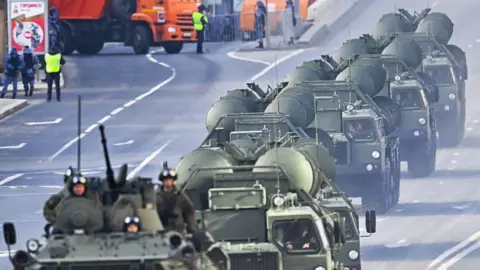
Putin’s visit to Delhi is coming at a crucial time for Modi and India’s global ambitions.
India-Russia ties go back to the Soviet era and have endured irrespective of the changing geopolitical landscape.
Putin has arguably put more time and energy into this relationship than other Russian leaders before him.
As for Modi, despite coming under intense pressure from Western governments to criticise Russia over its war in Ukraine, he maintained that dialogue was the only way to resolve the conflict.
This was India’s “strategic autonomy” at play – with Modi occupying a particular place in the geopolitical order where he held close ties with Moscow while maintaining his relationship with the West at the same time.
That worked – until Trump returned to the White House. India-US ties have hit an all time low in recent months as the two countries have failed to resolve the tariff deadlock.
In this context, Putin’s visit assumes more significance for Modi than ever before because it will test India’s geopolitical autonomy. He will be walking the proverbial diplomatic tightrope here.
Modi would want to show Indians at home and in the wider world that he still counts Putin as his ally and hasn’t given into pressure from Trump, whom he has earlier called his “true friend”.
But he has also faced pressure from his allies in Europe – just this week, the German, French and UK ambassadors in India wrote a rare joint article in a major newspaper criticising Russia’s stance on Ukraine.
And so, Modi will have to ensure that the strengthening of India-Russia ties does not overshadow ongoing trade talks with the US and his partnership with Europe.
“For India, the challenge is strategic balance – protecting autonomy while navigating pressure from Washington and dependence on Moscow,” said the Global Trade Research Initiative (GTRI), a Delhi-based think-tank.
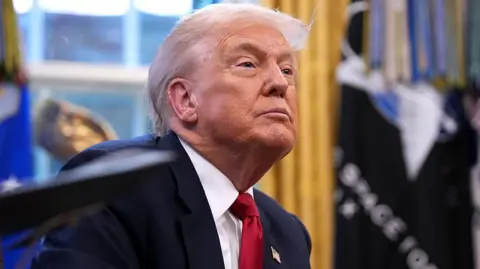
Modi’s other priority will be to unlock the potential of bilateral trade between India and Russia.
Analysts have often said that the economic relationship between the two strong allies has underperformed for decades.
Their bilateral trade rose to $68.72bn at the end of March 2025, up from just $8.1bn in 2020. This was largely due to India sharply increasing discounted Russian oil purchases. This has skewed the balance heavily in favour of Russia and that is something Modi would want to correct.
With Indian firms already reducing oil purchases from Russia to avoid sanctions from Washington, the two countries will look at other areas to boost trade.
Defence is the easiest pick. India’s defence imports from Russia reduced to 36% between 2020 and 2024, from the peaks of 72% in 2010-2015 and 55% between 2015 and 2019, according to Stockholm International Peace Research Institute.
This was largely due to India’s attempt to diversify its defence portfolio and boost domestic manufacturing.
But a closer look at these numbers tells a different story. Several Indian defence platforms still rely heavily on Russia. Many of its 29 air force squadrons use Russian Sukhoi-30 jets.
India’s limited armed conflict with Pakistan in May this year proved the indispensable role of Russian platforms like the S-400 air defence systems in its armed forces but it also showed the vulnerabilities that the country urgently needs to fix.
Reports suggest that India wants to buy the upgraded S-500 systems and the Su-57 fifth-generation fighter jet. Pakistan’s purchase of the China-made J-35 fifth-generation stealth fighter has not gone unnoticed in Delhi, and it would want to secure a comparable jet as soon as possible.
But Russia is already facing a shortage of critical components due to sanctions and the war in Ukraine. The deadline to deliver some units of the S-400 have reportedly been delayed to 2026. Modi will seek some guarantees on timelines with Putin.
Modi would also want Russia’s economy to open space for Indian products to fix the massive trade imbalance.
“Consumer-oriented and high-visibility categories remain marginal: smartphones ($75.9m), shrimp ($75.7m), meat ($63m) and garments at just $20.94m underscore India’s limited penetration in Russia’s retail markets and electronics value chains despite geopolitical churn,” GTRI said.
Modi aims to position Indian goods in Russia’s market, especially once the war ends and Moscow is reintegrated into the global economy.
He would seek to lessen trade dependence on oil and defence, aiming for a deal that strengthens ties with Russia while leaving room to deepen relations with the West.
“Putin’s visit is not a nostalgic return to Cold War diplomacy. It is a negotiation over risk, supply chains and economic insulation. A modest outcome will secure oil and defence; an ambitious one will reshape regional economics,” GTRI said.
[BBC]
Foreign News
Pakistan to sell national carrier PIA for IMF loans, Munir’s Fauji firm among bidders

Pakistan’s sale of its flag carrier PIA is its first major privatisation in two decades. The divestment comes because of an IMF bailout condition. With four bidders, including military-led Fauji Fertiliser, the auction on December 23 is key for a debt-ridden economy and its crippled national carrier.
Pakistan, which has been surviving on loans and doles, will auction off its debt-ridden national carrier, Pakistan International Airlines (PIA), on December 23, 2025, in a live-broadcast bidding process that the government describes as the “final step” to meet a key condition of its $7 billion IMF’s bailout package, reported Geo TV.
The sale of between 51% and 100% of PIA shares — including full management control — is a formal structural benchmark under the Extended Fund Facility (EFF). The IMF’s Executive Board is scheduled to meet on December 8 to release the next $1.2 billion tranche ($1 billion EFF + $200 million climate facility); completion of the PIA bidding process by year-end is explicitly required for future disbursements.
Among the four companies that have pre-qualified for the bidding is Fauji Fertiliser Company Limited, part of the military-controlled Fauji Foundation.
“We’re targeting Rs 86 billion in privatisation proceeds this year. For PIA, in the last round of bidding, 15% of the proceeds were going to the government, with the rest staying within the company,” Pakistan’s Privatisation Minister Muhammad Ali told Reuters last month.
The divestment of PIA stakes would be Pakistan’s first major privatisation effort in two decades, according to Dawn.
“Four bidders have been pre-qualified for the sale: Lucky Cement Consortium, Arif Habib Corporation Consortium, Fauji Fertiliser Company Limited and Air Blue Limited,” it reported.
Fauji Fertiliser is part of the Fauji Foundation, which has emerged as one of the biggest corporate players in Pakistan, a country where the military has fingers in every pie.
Field Marshal Asim Munir, the most powerful person in Pakistan today, does not hold a direct position on the Central Board of Directors (CBDs) of Fauji Foundation. He appoints the Quartermaster General (QMG) who is part of the CBD of the Fauji Foundation.
Munir, as the head of the Pakistan Army, and now the unified defence forces, also exerts indirect influence over Fauji Foundation through the military’s institutional control, including appointments to key positions and alignment with national security and welfare priorities.
Government rules mandate that majority ownership must remain with Pakistani nationals; foreign entities are barred from acquiring controlling stakes.
The PIA divestment is crucial for Pakistan as it takes loans to refinance loans. In 2023, Pakistan was on the brink of defaulting on its debts, a result of its years of financial mismanagement. One of its major expenditure is on defence forces.
The $7-billion loan programme of the IMF for Pakistan was approved in September 2024 While $1 billion was given immediately, the rest of the money was to be disbursed over a period of 3 years.
Pakistan, whose economy is in tatters, is the IMF’s fifth-largest debtor. It has taken more than 20 loans from the IMF since 1958.
(India Today)
-

 News6 days ago
News6 days agoWeather disasters: Sri Lanka flooded by policy blunders, weak enforcement and environmental crime – Climate Expert
-
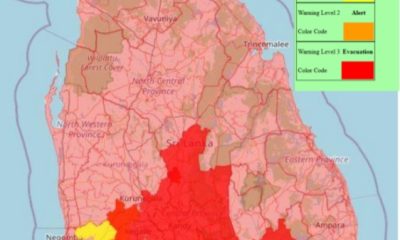
 Latest News7 days ago
Latest News7 days agoLevel I landslide RED warnings issued to the districts of Badulla, Colombo, Gampaha, Kalutara, Kandy, Kegalle, Kurnegala, Natale, Monaragala, Nuwara Eliya and Ratnapura
-

 Latest News7 days ago
Latest News7 days agoINS VIKRANT deploys helicopters for disaster relief operations
-
News3 days ago
Lunuwila tragedy not caused by those videoing Bell 212: SLAF
-

 Latest News4 days ago
Latest News4 days agoLevel III landslide early warnings issued to the districts of Badulla, Kandy, Kegalle, Kurunegala, Matale and Nuwara-Eliya
-

 News2 days ago
News2 days agoLevel III landslide early warning continue to be in force in the districts of Kandy, Kegalle, Kurunegala and Matale
-

 Features4 days ago
Features4 days agoDitwah: An unusual cyclone
-

 Latest News5 days ago
Latest News5 days agoUpdated Payment Instructions for Disaster Relief Contributions


